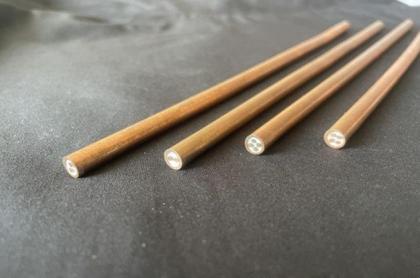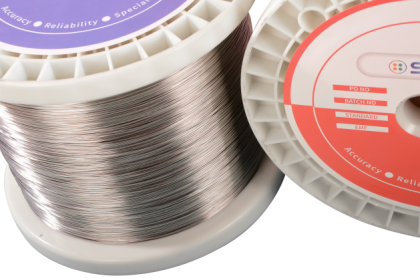Among the two categories of contact and non-contact products, contact thermocouple with a large quantity and a wide range have developed rapidly in the development of modern technology. Increased service life and greatly reduced costs by using new materials.
1. Current Situation
The protection tube of industrial thermocouple has high requirements for prolonging the service life of thermode and improving the accuracy of temperature measurement: air tightness (small porosity), sufficient mechanical strength, stable physical and chemical properties, good thermal conductivity.
The material selected as the high-temperature protection tube should have comprehensive properties of high temperature resistance and thermal shock resistance due to harsh working conditions( high thermal conductivity, small thermal expansion, and good high-temperature mechanical strength), so that it can withstand rapid cooling and rapid heating. In addition to the above-mentioned properties, the protection tube material for the temperature measurement of molten steel is also required to be resistant to corrosion and erosion of molten metal and steel slag.The protection tube material used in strong corrosion environments such as acid, alkali and salt bath, in addition to the above-mentioned properties. , must also be resistant to corrosion by specific media.
1.1. Metal Protective Sheath Material
(1) Ti alloy: the use temperature is generally in the low temperature range below 250 °C, especially the corrosion resistance of seawater is good;
(2) Copper and copper alloy: this type of material is mainly used in an environment below 300-500 °C without corrosive atmosphere. It has good thermal conductivity and air tightness, and good processing performance. Copper is easy to oxidize, so it is often plated with nickel or chromium on the surface;
(3) Low-carbon heat-resistant steel: mainly used in oxidizing environments with temperatures around 600°C, with poor oxidation resistance and general corrosion resistance. For corrosion resistance, surface modification must be carried out, such as nickel plating on the surface;
(4) Stainless steel: there are many varieties of stainless steel with a wide range of applications. The temperature ranges from 800 to 1000°C. It has good acid and corrosion resistance and good mechanical strength. But due to its poor high temperature heat strength, its high wear resistance is poor. In order to reduce the cost of the protective tube, the section inserted into the measured medium is usually made of stainless steel or heat-resistant stainless steel, and the rest is made of ordinary carbon steel, and the two are welded together;
(5) Nickel-based super alloy: There are many varieties, the maximum service temperature is 1250°C, and the general application is wide.Because of its high nickel content, the cost of the material is also high. This type of steel has better high temperature oxidation resistance and better thermal strength;
(6) Iron-based corrosion-resistant alloy: Fe-Cr series, which can be used at 1000 °C. This series of alloy has good corrosion resistance to the corrosion of aluminum and aluminum alloy liquids, and has good corrosion resistance to some organic substances;
(7) Precious metal materials are mainly used in refractory metal materials such as platinum, tantalum, niobium, tungsten and tungsten alloy in oxidizing atmospheres in the temperature range of 1400-2000°C, and are mainly used in high-temperature measurements in reducing atmospheres.
1.2. Ceramic Protective Sheath Material
(1) Quartz tube: the main component is SiO2, which is generally used below 1100°C. It has good thermal shock resistance, air tightness and corrosion resistance. When used above 1100°C, it will cause quartz recrystallization and reduce the mechanical strength. It is suitable for oxidation when used in an atmosphere, after long-term use at high temperature, the transparency of quartz will gradually disappear, and the mechanical strength will also decrease and it will be easily brittle;
(2) The main component of the porcelain tube is Al2O3+SiO2, the maximum service temperature can reach 1500 °C, and it can be used for a long time below 1200 °C. The wear resistance, corrosion resistance, high temperature strength and electrical insulation performance of this material are good, but the air tightness and thermal shock resistance is poor;
(3) Corundum tube is a protective tube material that is widely used. The higher its purity, the better its resistance to high-temperature oxidation. It can be used in a higher temperature range of 1800 °C in oxidizing and reducing atmospheres. It has good high-temperature electrical insulation performance and mechanical strength, high thermal conductivity, low thermal expansion rate. Does not work with air, water vapor, hydrogen, carbon monoxide and nitrogen above 1700°C;
(4) Magnesium oxide can be used at temperature up to 1800°C. It has good insulation performance at high temperature. High thermal conductivity and insulation performance, surpassing alumina, corrosion resistance to inorganic salts and oxidative atmospheres. Poor thermal shock resistance makes it is not suitable for temperatures above 1700° C in reducing atmospheres Long-term use. It is corroded by halogen and sulfur atmosphere above 1800°C, and it is easy to be hydrolyzed by moisture, which will reduce the insulation resistance and poor mechanical strength;
(5) Zirconia can be used at a high temperature of about 2000 °C. Its resistivity and thermal conductivity are very small, and it is unstable in halogen, sulfur-containing and carbon-containing atmospheres at high temperatures. However, it is still stable up to 2400°C in an oxidizing atmosphere. Susceptible to corrosion by alkaline oxides, other high temperature performance is better;
(6) Silicide material has good high temperature resistance and can be used in the range of 1600-1800°C. Its thermal strength, oxidation resistance, thermal shock resistance, high temperature wear resistance are good;
(7) Graphite is generally used below 2000°C. It has good thermal conductivity and thermal shock resistance.Strong corrosion resistance, commonly used in molten metal measurement. The disadvantage is that it is easy to oxidize and form a reducing atmosphere around it. When measuring temperature, it is easy to cause some free ions of carbon to contaminate the thermal electrode and change the thermoelectric characteristics of the thermocouple. In addition, graphite has poor mechanical strength and low insulation resistance.
1.3. Composite Protective Sheath
(1) Metal Ceramic Composite Protection Tube
Thermocouple protection tubes made of cermet materials have the characteristics of good thermal conductivity, strong thermal shock resistance, heat resistance, and wear resistance. They are generally suitable for use in liquid metals, such as molten iron, molten steel, and non-ferrous metal melts;
(2) Special Composite Coated Protective Sheath
Thesheath made of composite material can combine the characteristics of two different materials, metal and ceramic sheath.
2. New Material Coating Technology
Different materials can be combined to modify the surface of the material, and coating materials with different functions can also be obtained.
2.1. Intermetallic Coated Protective Sheath
High temperature corrosion mainly includes high temperature gas corrosion, high temperature molten salt corrosion, high temperature liquid metal corrosion, etc. The main reason for the failure of the thermocouple protection sheath is the failure of the surface due to high temperature corrosion and wear. Improving the service life of the thermocouple is mainly to improve the service life of the thermocouple protection sheath. Ordered intermetallic compound high-temperature material is a new type of metal-based structure, which has a series of excellent properties due to its ordered crystal structure and the coexistence of metal bonds and covalent bonds.
First, it has excellent corrosion resistance, good oxidation resistance, especially strong resistance to hydrogen sulfide; second, it has excellent wear resistance, and the coating has the characteristics of high temperature and high hardness of intermetallic compounds, the third is that it has excellent heat resistance, the fourth is that ordinary materials can be used instead of high-quality materials, and the fifth is that the cost is low under the premise of ensuring performance.
2.2. Functional Gradient Coating Material Thermocouple Protection Sheath
Japanese scientists first proposed the concept of functional gradient materials(FGM) in 1984. Intermetallic compound has good corrosion resistance and heat resistance, while fine ceramics not only have corrosion resistance and heat resistance, but also have outstanding wear resistance and outstanding non-stick properties.
2.3. Nano-ceramic Coating Material Thermocouple Protection Sheath
Nanomaterial has a large amount of interface, and the arrangement of interface atoms is chaotic. When atoms are deformed by external force, they are easy to migrate and diffuse, showing excellent plasticity, toughness, ductility, and a diffusion coefficient twice as high as that of coarse crystals. The small size effect makes the heat capacity and scattering rate of nanomaterials larger than other similar materials, and its melting point and sintering temperature drop significantly. Compared with traditional thermal spray coatings, nanostructured coatings will have significant improvements in strength, toughness, corrosion resistance, wear resistance, thermal barrier, thermal fatigue resistance, etc., and one coating can have the above-mentioned properties at the same time.
Related products: bare thermocouple wire, mineral insulated cable






 IPv6 network supported
IPv6 network supported